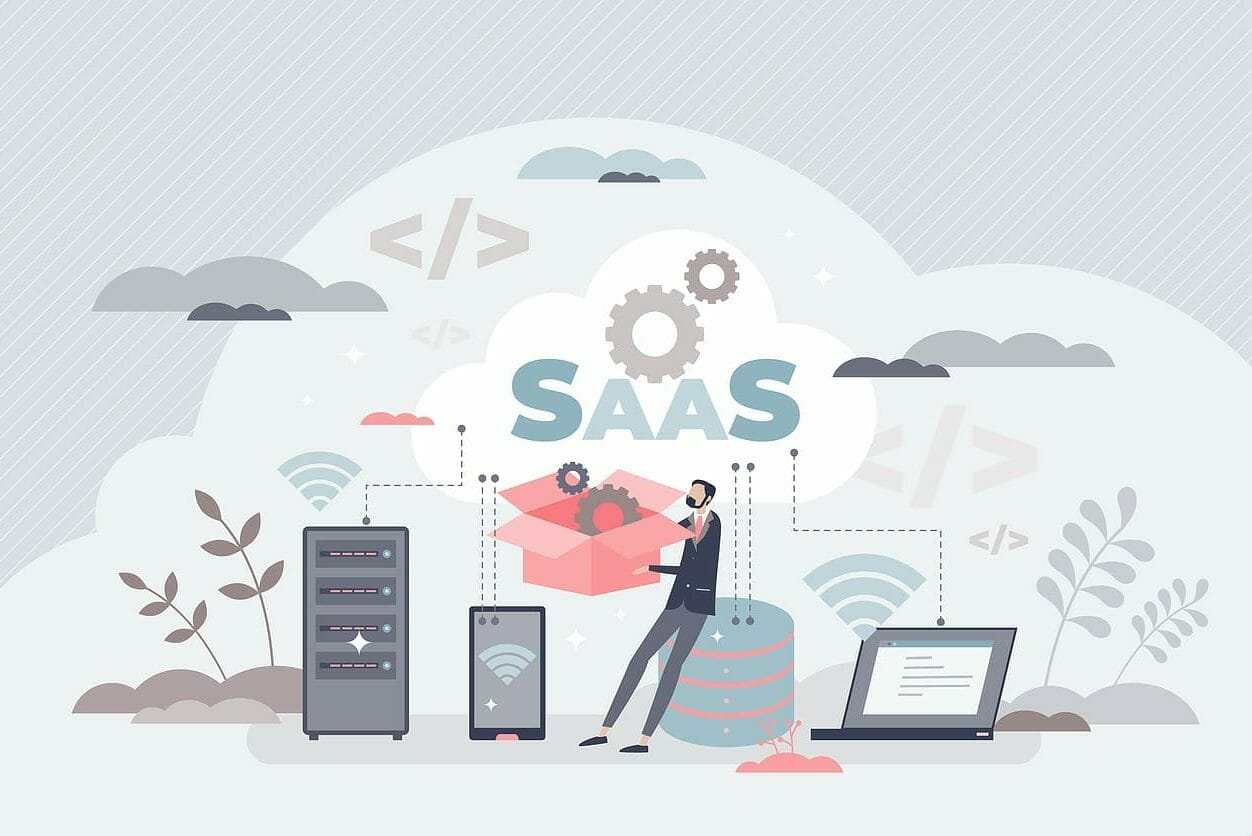When was the last time you downloaded software onto your computer? It’s not likely your answer would be “recently.” That’s because internet users today want easy access to services from their device without having to install any additional software, and companies have sprung into action to provide those services.
SaaS, or Software as a Service, is an on-demand software that uses the internet to deliver applications to users. As a cloud application service, users are not responsible for any updates, downloads or installations. Businesses all over the world use SaaS applications for collaboration, billing, financial management, sales management, startup applications and more. Due to server maintenance, storage and other recurring costs, customers and users typically pay a per month or annual subscription to access such SaaS platforms.
WordPress for SaaS Applications
As SaaS has evolved, many startups and companies looking to push out a minimum viable product have looked to developing WordPress to function as a SaaS, which allows companies to customize the user experience with an easy-to-use, cloud-based platform.
WordPress, as you’re probably already aware, was not created to function as a Software as a Service but as a web content management system. This CMS has, however, evolved with time and now can provide core features of a SaaS platform through the use of both commercial plugins and custom coded solutions. WordPress.com itself is even a great example of a SaaS.
So, can you use WordPress for SaaS? Certainly, and in this guide we’ll show you when you could benefit from using WordPress as a Saas and when you should steer clear, as well as how to start your WordPress SaaS build.
Differences Between SaaS and Traditional Software
There are a few key characteristics that distinguish SaaS from traditional software. The most obvious difference is that traditional software needs to be installed on a desktop computer, while SaaS does not require installation and runs in the web browser or mobile application.
Traditional software requires specific equipment and huge storage data, while SaaS stores data on the cloud for access via the internet. SaaS is cheaper than traditional software for users, and can be used without a significant fee upfront. It can also be accessed by many people on different devices, while traditional software can only be accessed on the device it was installed on. This makes Saas ideal for most end users since they can simply use their web browser or mobile app to access your company’s software solution.
Should you use WordPress for Your Project?
Whether or not to use WordPress as a SaaS solution depends on the situation. WordPress can be an ideal way to create a new web app when either budget or time constraints are a significant factor. Projects that can benefit from using WordPress as a SaaS include:
- Corporate and SMB companies looking for an inexpensive, scalable solution to prove their solution works to key stakeholders
- Startups that need to launch quickly at a lower cost point
- Short-term projects or minimum viable products (MVPs)
- Applications that will need both web and mobile access
The advantages of using WordPress as a SaaS platform is that it allows you to control and scale the site as you need, launch quickly, and develop your web app at an affordable price. With WordPress, you can create your own hosting site, have access to thousands of plugins and themes, and utilize a multisite feature. You can hire developers to both incorporate plugins as well as custom build a plugin or code for your project specifications.
When should you not use WordPress for SaaS?
It’s important to remember that WordPress wasn’t created to be used for a SaaS. It can be used for it, but that wasn’t its original purpose. It can be difficult to start up without the help of a professional web developer so you will still need some upfront funds for most SaaS projects. Other reasons it’s not a good option to use WordPress include:
You are creating a mission critical application with real-world physical effects such as in the medical, architectural or similar fields
Rebuilding the application later down the line as a custom non-WordPress app is not an option
How to Start Building SaaS on WordPress
If you know you want to build SaaS on WordPress, first you need to determine your approach. WordPress offers options for single sites and multisites. If you would like a similar version of your application to be shown to all users with only content or feature restrictions, a single site is best, whereas if you need users to have the option for users to have their own subdomains, a multisite WordPress is a must.
When your core business idea is set and you have determined whether you need a single site or multisite, you can select existing WordPress plugins to fit your needs and build the user interface as a custom WordPress theme. In addition, you can consider having a web developer build your entire SaaS product as a custom WordPress plugin. This has the benefit of ensuring the web app is lightweight and flexible, but this does increase overall costs.
WordPress SaaS Plugins
WordPress plugins are highly customizable add-on software components that add new features and functions to your site. The great thing about WordPress plugins, besides there being over 50,000 to choose from, is that they make it easy to customize your software without having to write too much code in most cases. A few great examples of WordPress plugins for SaaS include the WooCommerce ecommerce plugin and the MemberPress membership plugin, which can be integrated together to build an online platform with different user subscription tiers and set up recurring paid subscriptions. Users can access customized restricted content based on their membership level while being charged automatically each month just like a true SaaS platform.
You can also develop a custom plugin that will incorporate all of your plugins while delivering the core function of the application. This approach is best when the budget and timeline allows as you get the best of both worlds in terms of customizations and not reinventing the wheel. In other words, your application can be fully customizable, lightweight while using WordPress as the web code structure to save costs and time on features already in the WordPress platform such as user logins, payments and more.
WordPress SaaS Themes
WordPress themes for SaaS determine how your web application will look to the user. When you’re looking for a SaaS WordPress theme, make sure you focus first on user experience. That’s because users have high expectations after using cloud-based software from tech giants like Google. Having a well-optimized SaaS WP theme can allow for a responsive application that meets the customer’s needs.
Secondly, look for a theme that has plenty of conversion elements including testimonials, comment sections, and call-to-action buttons. Finally, you can also have a professional web developer custom code your application theme to ensure the page loads faster than drag and drop builders. Then static and marketing landing pages can continue to use a visual builder for the content pages you will need to routinely edit without a web developer.
Using Custom Plugins to Develop Your App Experience
If you don’t know by now, plugins are what elevates WordPress from a simple CMS platform to having the ability to function as a SaaS platform. With all of the quality, pre-built plugins at your disposal, you can perform a variety of functions within your site to create a product that customers find easy and enjoyable to use.
Manage Users
WordPress already provides you with a user system with permissions and roles, which, combined with a membership plugin, can create an easy solution for payment processing, account upgrades, subscription management, page access and feature limitations. You can even use the same application to build out complementary features such as your customer support portal with a knowledge base, ticket support and customer relationship management (CRM).
Secure Your Site
Selecting a plugin that can provide your application with brute force login protection is the best way to keep it secure. Use a plugin that only allows registered users to access certain URLs and pages. Additionally, you can use a web access firewall (WAF) plugin to prevent suspicious parties from accessing the site.
Personalize the Registration and Login Process
Having users manually approve before accessing the website can be achieved by creating a custom plugin. Determining your authentication policies can give you control over who and how many people have the ability to access the system. You can require manual approvals as noted or you can leave the system where users need to verify they are using a real email address to allow instant access while preventing spam user issues.
Ready to get started on your SaaS? Inspry can help.
WordPress can be an effective SaaS platform in many cases due to the number of features and tools at your disposal. These sites can be developed in record time and at an affordable price. If you’re looking to jumpstart your new business and develop WordPress as a SaaS, contact the web application developers at Inspry. Our team can build you a custom web solution that fits your needs and your budget. Give us a call today!

